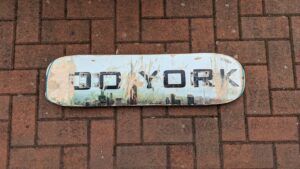Lets start this article by explaining what turf toe is, because I’ve had it and I’ve recovered from it, but it was painful and difficult to explain why or how it happened.
What is Turf Toe?
Turf toe is a common injury that affects the joint at the base of the big toe, and I felt it most between the base and the first bend in my big toes (yes both toes). It is typically caused by a sprain or hyper extension of the toe, often as a result of playing sports on artificial turf or other hard surfaces and in our case, skateboarding on concrete (which is probably the hardest flooring that sports are done on). The OrthoInfo website has a great detailed description on this as well. Link
Can I get Turf Toe Skateboarding?
Yes, you absolutely can. I found that it was a gradual injury, and the more I skated the worse my turf toe got. My normal routine at the time was one session per week of around 2 hours, and I’m 35 years old. I never once had turf toe when I skated for 10 years + when I first started, but as I got back into the sport at 34, this started to occur.
Why does Turf Toe happen when Skateboarding?
The condition gets its name from the fact that it is often seen in athletes who play sports on artificial turf. The surface of artificial turf is typically harder and less forgiving than natural grass, which can cause the foot to slide or twist unnaturally, leading to injury. However in skateboarding I believe the problem of turf toe comes from the fast and hard impact of your toes hitting the ground as you Ollie, combined with the stretching your toes make as you put your foot on the floor to push. The image below shows a perfect example of how my toes are fully stretched when I’m skateboarding.

What are the Symptoms?
Symptoms of turf toe my turf toe included pain that affected the toe joints but swelling, and stiffness in the affected joint are also possible. In some cases, the injury may also cause a loss of mobility in the toe. For me the unforgiving winter in the UK which prevents skateboarding is what enabled me to heal. I hated the idea of spending a few months off the skateboard to heal my turf toe, but when it was non-optional it becomes easier. Treatment typically involves rest, ice, compression, and elevation (RICE), as well as the use of pain relievers and anti-inflammatory medications. In severe cases, surgery may be necessary to repair the damaged ligaments or tendons in the toe
I now skate without any toe issues but we’re only just starting spring, so we will see how well this remains. As I increase my exercise regime over the warmer months, I’ll monitor my progress and if I feel any of the Turf Toe returning when I skate, I will ease off for a week or so, to enable me to get back to my normal performance levels and not have this injury impact my skateboarding.
If you’re in doubt regarding what you have, then please consult a medical professional, for an appropriate diagnosis. In the mean time, you have my sympathies because turf toe is a horrible injury for skateboarders, it really prevents you from skateboarding if you want to heal. Good luck!
If you’re interested in helping to protect your toes a little better, make sure you try and get the correct footwear as well, check out my post on the best shoes for skateboarding beginners

